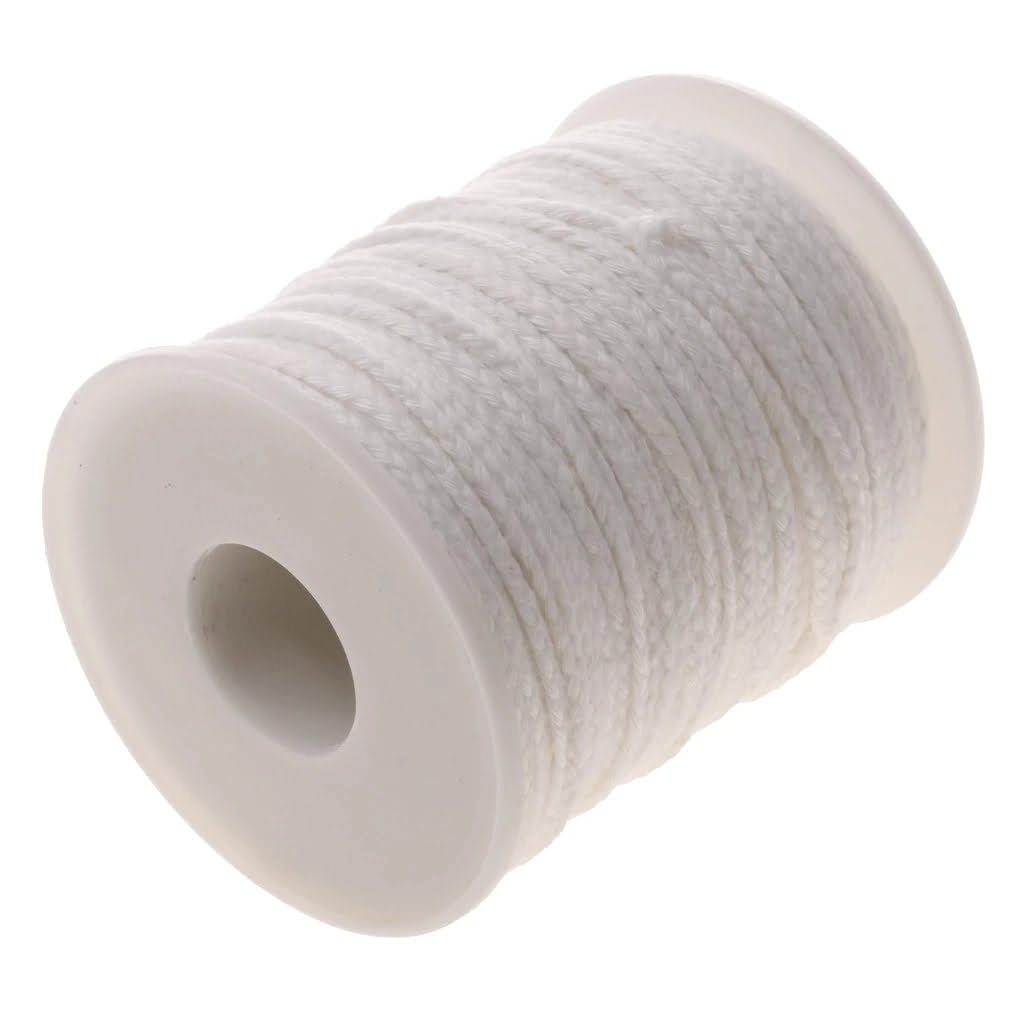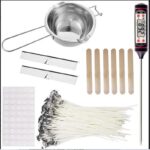Candle making has long been a beloved craft, but in recent years it has gained significant popularity and has become a thriving industry. In this article, we will delve into the question that many aspiring candle makers often ask: is candle making profitable? We will explore the history of candle making, examine its current rise in popularity, evaluate its market potential in today’s economy, and uncover the secrets to success in this creative and lucrative realm.
The art of candle making dates back thousands of years, with roots that can be traced back to ancient civilizations. From using animal fat or beeswax as the primary ingredient to advancements in techniques and materials over time, candle making has evolved into a versatile craft that combines creativity and craftsmanship. In recent years, there has been a significant surge in interest and demand for handmade candles, creating opportunities for entrepreneurs to turn their passion into profitable ventures.
As we dive deeper into this topic, we will take a closer look at the financial viability of starting a candle making business. We will analyze the start-up costs involved and the required investment to get your venture off the ground. Additionally, we will unveil strategies for setting appropriate pricing and maximizing profit margins. Marketing and distribution will also be explored as key factors in ensuring your candles reach their intended audience effectively.
While candle making may seem like an alluring business prospect, there are certainly challenges that come with it. From sourcing high-quality materials to competing with established brands, navigating through these obstacles requires determination and adaptability. However, we will also share inspiring success stories from entrepreneurs who have found profits in candle making, showcasing how dedication and innovation can lead to rewarding outcomes.
Now that you have a glimpse of what lies ahead in this article, let us begin our exploration of the lucrative realm of candle making. By examining its history, current trends, market potential, artistic aspects, financial considerations, marketing strategies,and overcoming challenges; you’ll be equipped with valuable insights needed to ultimately make the decision: is candle making profitable for you?
History of Candle Making
The history of candle making dates back thousands of years, making it one of the oldest known crafts in human history. The earliest evidence of candle making can be traced back to ancient civilizations such as Egypt and Mesopotamia, where candles were primarily made from tallow or animal fat. These early candles served practical purposes like providing light and warmth, as well as being used in religious ceremonies.
As time went on, the process of candle making evolved and improved. In the Middle Ages, beeswax began to be used as a raw material for candle production, providing cleaner burning and more pleasant scents compared to tallow candles. Beeswax candles were often associated with wealth and luxury, as the material was expensive and scarce.
During the 18th century, advances in technology brought about new methods of candle making such as dipping and molding. These techniques allowed for faster production and more consistent results. Additionally, the discovery of whale oil led to the creation of spermaceti wax candles that burned with an exceptionally high quality light.
In the 19th century, paraffin wax was introduced as a cheaper alternative to beeswax and became widely popular due to its affordability and availability. This development led to mass production and widespread use of candles in households across various social classes.
Overall, the history of candle making showcases how this ancient craft has evolved over time, adapting to changes in materials and technology. Despite these advancements, candles have remained a symbol of warmth, illumination, and ambiance throughout centuries.
The Rising Trend
Candle making has experienced a surge in popularity in recent years, with more and more people embracing this traditional craft. The current trend can be attributed to several factors that have contributed to the growing interest in candle making.
First and foremost, there has been a shift towards more sustainable and eco-friendly products. As consumers become more conscious of their environmental footprint, they are actively seeking out alternatives to mass-produced, synthetic items.
This has created a demand for natural, handmade products like candles that are made using non-toxic ingredients and sustainable materials. By making candles at home, individuals have the opportunity to not only reduce their carbon footprint but also create personalized products that align with their values.
Moreover, candle making offers a creative outlet for many individuals. In today’s fast-paced world, people are increasingly looking for activities that allow them to disconnect from technology and engage in hands-on experiences.
Candle making provides an avenue for self-expression and creativity as individuals can experiment with different scents, colors, and designs. This artistic aspect of candle making appeals to a wide range of people including those interested in DIY projects or those looking for a therapeutic and relaxing hobby.
Another factor contributing to the rising trend is the increasing preference for unique and customized items. With candle making, individuals can tailor the fragrance, color, size, shape, and packaging according to their personal preferences or even create custom-made candles for special occasions such as weddings or birthdays. This level of customization offers a sense of exclusivity that cannot be found in mass-produced store-bought candles.
To further explore the current popularity of candle making check out these reasons why it is on the rise:
- Sustainability: People are embracing eco-friendly products made from natural ingredients.
- Creative Outlet: Candle making allows individuals to express their creativity.
- Customization: Personalized candles offer a unique touch that mass-produced candles lack.
As the popularity of candle making continues to rise, entrepreneurs have recognized the potential for profits in this industry. The next section will evaluate whether candle making is profitable in today’s economy and provide insights into the financial viability of starting a candle making business.
Evaluating the Market
The candle making industry has seen a significant rise in popularity in recent years, with more and more people turning to this craft as a way to express their creativity and create unique products. This section will focus on evaluating the market for candle making and determining whether it is profitable in today’s economy.
Growing Demand for Handmade Products
One of the key factors contributing to the profitability of candle making is the growing consumer demand for handmade products. In a world that often feels dominated by mass-produced goods, many consumers are seeking out handmade items that offer uniqueness and quality. Candles fit perfectly into this trend, as they can be customized with various scents, colors, and designs to suit individual preferences.
Market Saturation
While there is undoubtedly a strong demand for handmade candles, it is essential to acknowledge that the market may also be saturated with competition. With the rise of social media platforms like Instagram and Etsy, it has become easier than ever for individuals to start their own candle making businesses. To ensure profitability in such a competitive landscape, aspiring candle makers must find unique selling points or niche markets to set themselves apart from the crowd.
Exploring Different Market Channels
To determine the profitability of candle making in today’s economy, it is crucial to explore different market channels and their potential reach. Aside from selling candles directly through online platforms or physical stores, candle makers can also consider partnering with local boutiques or gift shops to expand their customer base. Additionally, establishing an online presence through social media marketing and targeted advertising can help reach a wider audience and attract potential customers who are passionate about handcrafted goods.
The Art of Candle Making
The art of candle making goes beyond just creating a source of light. It is a creative and artistic process that allows individuals to express their style, personal taste, and craftsmanship. In this section, we will delve into the various aspects of candle making that make it a truly artistic endeavor.
Unleashing Creativity
One of the most appealing aspects of candle making is the opportunity it provides for creativity. From choosing the type of wax and fragrance to deciding on the shape, size, and color of the candles, there are endless possibilities to experiment with.
Candle makers can let their imagination run wild as they explore different techniques such as layering colors, adding unique textures or patterns, or incorporating decorative elements like dried flowers or glitter for a personalized touch. The ability to create custom-made candles that reflect one’s individuality is what sets this craft apart.
The Craftsmanship Involved
Candle making requires skill and attention to detail in order to produce high-quality products. Aspiring candle makers must learn about different types of waxes, wicks, and fragrances available in the market and understand how each component affects the overall quality of the final product.
They need to master techniques such as scent blending, proper pouring temperatures, and correct wick placement to ensure optimal burning performance and safety. Many dedicated artisans continuously refine their craftsmanship through practice and experimentation to achieve excellence in every candle they create.
An Outlet for Self-expression
Candle making offers individuals a platform to express themselves artistically while also providing an outlet for relaxation and stress relief. The process itself can be therapeutic as it enables creators to channel their emotions into crafting beautiful candles. Furthermore, by sharing their creations with others through gifts or selling them online or at local markets, candle makers can connect with customers who appreciate their unique vision and style.
Start-up Costs and Investment
Starting a candle making business requires careful consideration of the financial aspects involved. Before diving into this venture, it is essential to analyze the start-up costs and investment required to assess the financial viability.
- Equipment and Supplies: The first step in candle making is procuring the necessary equipment and supplies. These can include molds, wax, wicks, fragrance oils, dyes, melting pots, thermometers, and packaging materials. The cost of these items will depend on the scale of your operation and the quality of products you wish to create. Creating a list and researching suppliers can help you determine an estimate for these initial expenses.
- Workspace Setup: A dedicated workspace is crucial for candle making. Depending on the space you have available, you might need to invest in tables, shelving units, storage containers for materials, and safety equipment like fire extinguishers or ventilation systems. Additionally, you may need to consider any permits or licenses necessary for operating a business from your chosen location.
- Education and Training: Investing in education and training is essential to hone your skills as a candle maker. This might involve attending workshops or classes offered by experienced artisans or enrolling in online courses that teach specific techniques or provide comprehensive guides on starting a candle making business.
While education costs can vary widely depending on the resources you choose, remember that acquiring knowledge in this field can help improve the quality of your products and increase profitability.
Once you have determined the start-up costs associated with equipment, supplies, workspace setup, and education/training expenses, it’s time to assess how much financial investment will be required to launch your candle making business successfully. Careful planning at this stage will contribute greatly to your long-term profitability as well as avoiding unexpected financial burdens down the line.
Pricing and Profit Margins
In the world of candle making, understanding pricing and profit margins is crucial to achieve success. Determining the right price for your candles and maximizing profit margins can greatly impact the financial viability of your business. By unveiling some secrets to success in this area, you can ensure that your candle making venture is profitable.
To determine the right pricing for your candles, it’s important to consider factors such as the cost of materials, labor, overhead expenses, and desired profit margin. Conducting a cost analysis will give you a clear understanding of how much it actually costs to produce each candle. This includes not only the wax and wick but also any additives, fragrances, or decorative elements used. Additionally, factor in any labor costs involved in crafting the candles.
Once you have determined your costs, consider setting a profit margin that aligns with industry standards and meets your financial goals. The profit margin is essentially the difference between the cost of producing a candle and its selling price. It’s important to strike a balance between setting a competitive price that attracts customers while still allowing you to make a reasonable profit.
| Factors | Description |
|---|---|
| Cost of Materials | The total cost of materials required for candle production. |
| Labor Costs | The cost of labor involved in crafting each candle. |
| Overhead Expenses | The indirect costs associated with running the business (e.g., rent, utilities). |
| Desired Profit Margin | The percentage or amount of profit you want to make for each candle sold. |
When it comes to maximizing profit margins, there are several strategies you can employ. One is to find suppliers who offer competitive prices for materials. By keeping your costs low, you can increase your potential profits. Another strategy is to offer different candle sizes or packaging options at varying price points. This allows you to cater to different customer preferences and budgets while potentially increasing sales.
Furthermore, consider implementing effective pricing strategies such as value-based pricing or premium pricing. Value-based pricing involves setting the price based on the perceived value of the candle to the customer, taking into account factors such as quality, craftsmanship, and unique features. On the other hand, premium pricing involves positioning your candles as luxury or high-end products and setting a higher price than competitors’ offerings.
By carefully analyzing costs, setting reasonable profit margins, and employing effective pricing strategies, you can increase your chances of achieving profitability in candle making. It’s important to regularly review and adjust your pricing and profit margins based on market trends and changes in costs to ensure long-term success in this industry.
Marketing and Distribution
When it comes to candle making, having a solid marketing and distribution strategy is essential for maximizing profit. No matter how high-quality or unique your candles may be, if you don’t effectively reach your target market and get your products into the hands of consumers, your business will struggle to thrive. In this section, we will explore some key tips and strategies for successfully marketing and distributing your candles.
- Identify Your Target Market: Before you can effectively market and distribute your candles, it’s important to understand who your target market is. Are you catering to individuals who enjoy luxury scented candles or those who prefer eco-friendly options? Understanding your target market will help you tailor your marketing messages and distribution channels accordingly.
- Build an Online Presence: In today’s digital age, having a strong online presence is crucial for any business. Create a professional website where customers can browse through and purchase your candles easily. Additionally, utilize social media platforms such as Instagram and Facebook to showcase visually appealing images of your candles and engage with potential customers.
- Utilize Influencer Marketing: Collaborating with influencers in the home decor or lifestyle niche can significantly boost the visibility of your candle brand. Reach out to influential bloggers or social media personalities who align with your target market and offer them free samples of your products in exchange for reviews or promotional posts.
- Participate in Trade Shows and Local Markets: An excellent way to gain exposure for your candle business is by participating in trade shows and local markets that attract individuals interested in handmade goods. These events provide an opportunity for face-to-face interactions with potential customers, allowing them to experience the quality and scent of your candles firsthand.
- Establish Relationships with Retailers: Consider partnering with local boutiques, gift shops, or even larger retailers that align with the aesthetic and values of your candle brand. Offering wholesale prices to retailers allows you to expand your reach and leverage their existing customer base. Additionally, provide attractive product displays and point-of-sale materials to entice customers in-store.
Remember, successful marketing and distribution are ongoing processes that require regular evaluation and adjustment. Monitor the performance of different marketing channels, track sales data, and solicit feedback from customers to continuously improve your strategies. With a thoughtful approach and consistent effort, you can effectively market and distribute your candles, maximizing profit for your candle making business.
Challenges and Solutions
Running a candle making business is not without its challenges. While it may seem like a creative and enjoyable venture, there are obstacles that candle makers often face. However, with careful planning and the right strategies, these challenges can be overcome. In this section, we will explore some of the common obstacles in the candle making business and provide solutions to help entrepreneurs succeed.
One of the main challenges in the candle making business is competition. With the rising trend of candle making, the market has become saturated with various brands and products. It can be difficult for new or small-scale candle makers to stand out and attract customers.
To overcome this challenge, it is important for candle makers to differentiate themselves by offering unique products or targeting niche markets. This could involve creating candles with uncommon scents or designs that cater to specific customer preferences.
Another obstacle for candle makers is sourcing high-quality materials at affordable prices. The availability and cost of raw materials such as wax, fragrance oils, and wicks can greatly impact profitability. To address this challenge, candle makers can establish relationships with trusted suppliers or consider buying materials in bulk to reduce costs. Additionally, exploring alternative sources or sustainable options for materials can set a business apart from competitors while also appealing to environmentally conscious consumers.
Finally, marketing and distribution pose their own set of challenges for candle makers. Building brand visibility and getting products into the hands of customers can be difficult without effective strategies in place. Utilizing social media platforms, creating an online presence through e-commerce websites, participating in craft fairs or local markets are all valuable ways to reach potential customers. Collaborating with influencers or partnering with complementary businesses can also help expand reach and increase sales.
| Challenges | Solutions |
|---|---|
| High competition | Create unique products or target niche markets |
| Sourcing high-quality materials at affordable prices | Establish relationships with trusted suppliers, buy materials in bulk, explore alternative sources or sustainable options |
| Marketing and distribution | Utilize social media platforms, create an online presence, participate in craft fairs or local markets, collaborate with influencers or partners |
Success Stories
When it comes to the question of whether candle making is profitable, success stories of entrepreneurs who have found profits in this industry can provide valuable insights. These inspiring tales showcase how individuals have turned their passion for candle making into successful businesses, highlighting the potential for profitability in this creative craft.
One such success story is that of Jane Smith, who started her own candle making business five years ago. With a background in art and a love for scented candles, Jane decided to turn her hobby into a full-fledged business. She began by experimenting with different wax blends, fragrance combinations, and unique designs. Through word-of-mouth and social media marketing, Jane soon gained a loyal customer base and started receiving orders from all over the country.
Another example is the story of Mark Johnson, who left his corporate job to pursue his dream of being a candle maker. Mark’s extensive research on market trends and consumer preferences helped him identify a niche market – eco-friendly candles made from natural ingredients. He focused on creating environmentally sustainable products without compromising on quality or aesthetics.
This unique selling point attracted environmentally conscious consumers looking for premium candles. As a result, Mark’s business flourished and he was able to expand his product line within a few years.
These success stories demonstrate that profitability in candle making is achievable with dedication, creativity, and strategic planning. By identifying your target market, offering unique products or services, and effectively promoting your brand, you too can carve out a profitable niche in the candle making industry.
| Entrepreneur | Success Story |
|---|---|
| Jane Smith | Started her own candle making business; gained loyal customer base through word-of-mouth and social media marketing. |
| Mark Johnson | Left his corporate job to pursue candle making; targeted niche market with eco-friendly candles made from natural ingredients. |
Conclusion
In conclusion, the question of whether candle making is profitable ultimately depends on several factors. While the history and rising trend of candle making have shown its current popularity, it is essential to evaluate the market in today’s economy. Analyzing the financial viability of start-up costs and investments is crucial in determining if candle making can be profitable for you.
The art of candle making allows for creativity and craftsmanship, providing a unique opportunity to unleash your imagination and create one-of-a-kind products. However, it is important to understand that pricing and profit margins play a significant role in achieving profitability. Properly strategizing marketing and distribution efforts are essential to maximize profits.
It is crucial to acknowledge that challenges may arise when starting a candle making business, but with proper research and planning, these obstacles can be overcome. Hearing success stories from other entrepreneurs who have found profits in candle making can be inspiring and provide insight into what can be achieved.
Ultimately, deciding whether candle making is profitable for you requires careful consideration of all the factors outlined throughout this article. If you possess the passion for creating candles, have a solid understanding of the market dynamics, and are willing to put in the necessary effort and resources, candle making has the potential to be a profitable venture.
Frequently Asked Questions
How much money do you make making candles?
The amount of money one can make from making candles can vary significantly depending on various factors. These factors include the scale and efficiency of the production process, the cost of materials and equipment, the pricing strategy, and the demand for candles in the market. Additionally, factors such as competition, marketing efforts, and distribution channels also play a role in determining earnings.
Some candle makers operate small businesses as a side hobby or passion, while others have managed to turn it into a full-time lucrative venture. Ultimately, income potential is subjective and can range from a modest supplementary income to a substantial source of revenue.
Is it worth starting a candle making business?
Starting a candle making business can be worth it for individuals who have a genuine passion for creating unique scents and decorative candles and enjoy the artistry involved in crafting them. It offers an opportunity to turn a beloved hobby into a profitable venture with flexibility in terms of working hours and creative expression.
However, like any business endeavor, it requires thorough planning, market research, understanding customer preferences, and effective marketing strategies to successfully compete with established brands. Moreover, factors such as initial investment costs, sourcing quality materials, managing inventory levels, building brand reputation, and staying up-to-date with industry trends should also be carefully considered before starting a candle making business.
Is candle making business hard?
Running a candle making business can pose certain challenges that need to be addressed diligently for sustained success. While making candles itself may not be inherently difficult if one has mastered the techniques involved in creating different types of candles such as container candles or pillar candles – managing other aspects of the business can prove demanding.
This includes tasks such as sourcing high-quality ingredients at affordable prices, ensuring consistent product quality and safety standards compliance, building an effective distribution network or online presence for retailing products, competing against established brands in the market, innovating new designs or scents to stand out among competitors while maintaining profitability margins. Like any other entrepreneurial venture in highly competitive markets like soap and candle making, it requires dedication, perseverance, adaptability, and continuous learning to overcome challenges and succeed in the long run.

Welcome to my candle making blog! In this blog, I will be sharing my tips and tricks for making candles. I will also be sharing some of my favorite recipes.





